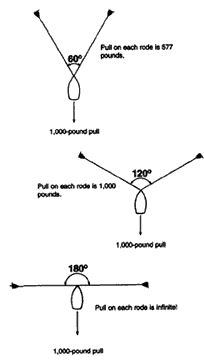markpierce
Master and Commander
- Joined
- Sep 25, 2010
- Messages
- 12,557
- Location
- USA
- Vessel Name
- Carquinez Coot
- Vessel Make
- penultimate Seahorse Marine Coot hull #6
My memory failed me.
*

*


*No, you had it right, the prop shaft was hollow to accomodate the cannon barrel.Marin wrote:
I used the wrong term in describing the propeller end of the P-39's drive train. I said "short, hollow propeller driveshaft" or something like that.
I have the same feeling about 17th/18th century sailing ships.* The amount of organization and coordination that went into building, sailing and fighting these incredibly complex machines is mind boggling.* And they pulled this off hundreds of times, 250 - 400 years ago.Marin wrote:
Looking at these illustrations it continues to amaze me that people can not only design, but build things like this.
*Well, you can do it but it might be*almost as much trouble as launching a dinghy.* We've never done but I've watched a boat do it.* What they did was deploy the stern anchor, pull forward and set it and continue moving forward until they were over where they wanted the bow anchor to be.* (So you need plenty of rode for the stern anchor.).*nomadwilly wrote:
As to using two anchors (I've been tempted) how does one do that without launching a dinghy?
*nomadwilly wrote:
*As to using two anchors (I've been tempted) how does one do that without launching a dinghy? Looks to me like it would take 3 people.*

*Absolutely.* We so far have only used our stern anchor in two situations.* One is when the winds in a relatively protected, narrow bay, like Fossil Bay on Sucia Island.* The waves kicked up outside by southerly winds only enter the bay one way--- straight down it's length.* But the winds can shift to blow across the bay at some angle or another.* So your moored or anchored boat points into the wind which puts it at an angle to the waves and the end result is a pitching, rolling movement that can become annoying afer awhile.* So we put the stern anchor out to keep the boat lined up with the waves.* The crosswinds can't get strong enough in bays like Fossil to cause the problem you describe.nomadwilly wrote:Anchoring fore and aft has a terrible downside in a cross wind as tension on the rodes would become strong enough to drag most any anchor, especially one full of weeds. And the boat would not only become part of the rode it would be broadside to cross winds.
*With our tides it could even turn into a 60 at low tide.**The idea is both anchors are deployed off the bow. So you wind up with the boat setting in the middle. If the wind or current swings you, you just spin around*by bow. I have tried doing the stern anchor and never really liked it. I have tied off to shore, that works but best in a calm anchorage with just the tide to worry about.nomadwilly wrote:
*Of course a 180 would turn into a 120 at low tide..
*I don't know about that one. I have used this set up before and I didn't have a problem. Once it did get a little twisted but the second rode was only 200 ft with a 100'*coiled I just unwrapped it from the other anchor. 2 or 3 turns.Marin wrote:
Regarding the notion of using two anchors off the bow at an angle, what happens when, as often does when we anchor, the current reverses and the boat does a 180? And in some of the places we anchor, the boat is constantly moving round, completing many rotations over the time we're there. Seems to me that anchoring with two anchors off the bow would result in a big wind-up of the two rodes.
*We have a 36' boat that displaces abut 28,000 pounds.* Our anchor is 44 pounds.* We use 3/8" chain (all chain rode). With your boat I wouldn't go any smaller than that.stevensibs wrote:
My 42' Bristol displaces 35000 lbs. and everything I've read in here and elswhere tells me I'll be able to sleep at night. I am only unsure abou the chain size...should I go 3/8"?
*Eric--- We've talked about this before but I don't think there is a one-size-fits-all solution for anything in boating, particularly not anchoring.* Chapmans is one opinion, and a very old opinon at that, and one, I believe, based on east coast boating on top of that.* The book is not God, although some people seem to think so.nomadwilly wrote:I am sure the combination rode is best. Chapman thinks so too. .... But installing unnecessary weight on ones boat can be a habit and accumulative over time such that a good boat can be turned into a dog that wallows in seas and is sluggish in getting her bow up on head seas. I think if I ever went to all chain on Willy it would be high test a size smaller than normal and I would do it for convenience.
Chapmans is a good source of information, but it's mostly general information (unless they've totally rewritten it since I bought my copy some ten or twelve years ago).nomadwilly wrote:
But about Chapman perhaps there's a big of argument left in me. I do'nt want to hear that Chapman's "OLD" stuff. Tell me what's wrong w what is presented in Chapnman's and I'll talk about that but the fact that Chapman's book started a long time ago dos'nt mean much to me and means everything to you.
